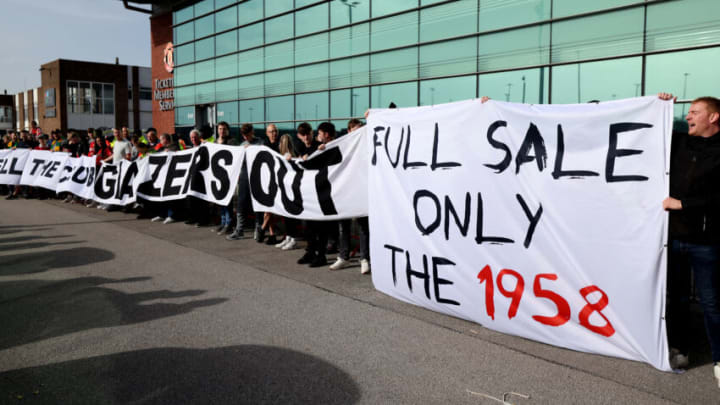Manchester United are struggling in the English Premier League not because of their performance but because of Glazernomics
Manchester United, the famed Premier League powerhouse, finds itself in the throes of a tumultuous period as the Glazer family, the club’s current owners, have put the team up for sale. Recent reports indicate that the bid from the “Nine Two Foundation”, spearheaded by Sheikh Jassim, has been spurned, while the Glazers are seemingly inclined towards considering a minority stake proposal from Sir Jim Ratcliffe. This development has incensed Manchester United’s loyal fan base, who have coined the term “Glazernomics” to epitomize what they perceive as a flagrant disregard for the club’s legacy and values.
The ownership conundrum shows no signs of resolution, casting a shadow of uncertainty over Manchester United. With the impending January transfer window looming, the absence of clarity regarding ownership looms as a significant impediment, making it arduous for both the manager and players to set and achieve goals. What exacerbates this dilemma is the pressing need for an immediate change in ownership, as the club’s financial woes have become glaringly apparent, portraying the Red Devils as a club on the brink of financial collapse.
Glazernomics: Breaking down the financials of Manchester United, 2023
Revenues
The Old Trafford outfit’s robust global appeal has translated into record revenue generation, primarily driven by an impressive uptick in both commercial and matchday earnings. The club’s strategic partnerships with industry leaders such as Adidas and Snapdragon have significantly bolstered its financial standing. Notably, the cumulative ticket sales for the 2022/23 season surpassed the figures achieved during the highly successful 2016/17 season, underscoring the club’s enduring popularity among fans. Manchester United’s overall revenue climbed to a remarkable £648.4 million, indicating a substantial 11.2% increase from the previous year. Despite encountering a decline in broadcasting revenue, the club’s strong performance in the commercial and matchday segments, with a notable growth of 17.5% and 23.4%, respectively.

Debt/Liabilities and Losses
Despite reaping a staggering revenue of £648.4 million and successfully cutting down on the wage bill by £52.7 million, the club’s owners have reported a substantial net loss of £28.6 million. This downward trend in profitability is a cause for concern, as Manchester United last recorded a profitable year in 2019. Over the course of the previous five fiscal years, the owners have accrued cumulative losses totalling £199.5 million, painting a precarious financial picture for the iconic Old Trafford-based club.
Furthermore, the financial woes of the club have been exacerbated by a substantial increase in debt. What was once a liability of under £1 billion in 2021 has now ballooned to £1.21 billion. As of June 30, 2023, Manchester United’s total indebtedness stands at £613.3 million, with an additional debt of £275.2 million under the secured term loan and revolving rate facilities, bringing the gross debt to £ 889 million.

Despite these concerning developments, the owners have attempted to maintain a positive front, citing depreciation and amortization to showcase an EBITDA of £15.4 million, enabling them to withdraw dividends. This move has drawn criticism, with many viewing it as a detrimental practice given the club’s precarious financial state.
Player Registrations
In the transfer window in 2022, Manchester United recorded an income of £31.6 million. However, the club made substantial investments, spending a sum of £156.2 million to secure the talents of renowned players such as Antony, Casemiro, and Sancho.
Moving on to 2023, the club’s expenditure on player acquisitions escalated further, reaching £207 million. Notably, this expenditure was facilitated through credit arrangements, with the club planning to spread the transfer fee payments over a five-year period. To enable these signings, the club resorted to borrowing, and drawing down funds on three separate occasions throughout 2023. As of June 30, 2023, the club has already borrowed £260 million out of a total of £300 million through revolving facilities.

As the club continues to rely on borrowings, the debt burden shows no signs of abating. Consequently, the interest payments on overdrafts and revolving facilities have experienced an upward trajectory, increasing from £23.03 million in 2022 to £30.7 million in 2023.
